Compared to traditional analog technology that is outdated, the technology revolution of AHD, HD-TVI and HD-CVI has been a breakthrough in technology in the last 10 years. These three advanced technologies have helped the camera production technology reduce its price, while the camera quality and the recorder have been upgraded significantly. So what is AHD technology and what is the difference between HD-TVI, HD-CVI and AHD cameras?
The backwardness of traditional Analog technology
1. Why was AHD, HD-TVI or HD-CVI technology born?
Along with the development of the information technology & computer industry, the revolution of CCTV (CCTV camera) technology in about 10 years – as we have noticed – has made breakthroughs.
As we can see in the early years of the 21st century, the camera had a very simple feature, but the price was very high. At that time, CCTV was still an extremely expensive technology product. Their prices could be close to a desktop computer.
But now things are different. Only about one million VNDs, you can own a pretty good quality camera with many unique features. For example, the ability to control 360-degree rotation, alarm features, features high-quality image storage, Full HD resolution and even infrared LEDs …
Back in the early years of the 21st century, see why did we have this revolution of technology AHD, HD-TVI and HD-CVI?
The technology of AHD, HD-TVI or HD-CVI is the new generation analog technology launched to “replace” traditional analog technology. But why is that? Join us to explore the exciting change right below!
(1) The obsolescence of traditional analog technology:
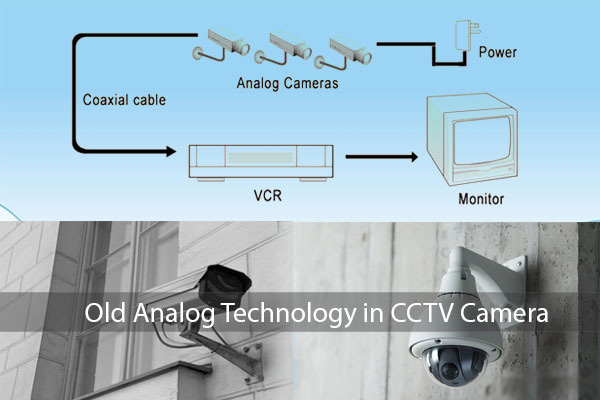
Along with the development of image processing chip technology, the camera resolution has reached Full HD and even higher. While the ability to transmit signals on coaxial cables according to “traditional analog technology”, there are two major problems:
- Problem 1: Coaxial cable cannot transmit Video signals beyond 100m. When transmitting, the signal is almost lost, with image noise, audio noise .
- Problem 2: Full HD image quality is significantly reduced when traveling 100 meters away and cannot go further. Thus the transmission of higher resolution video signals (4K, 8K) is almost impossible.
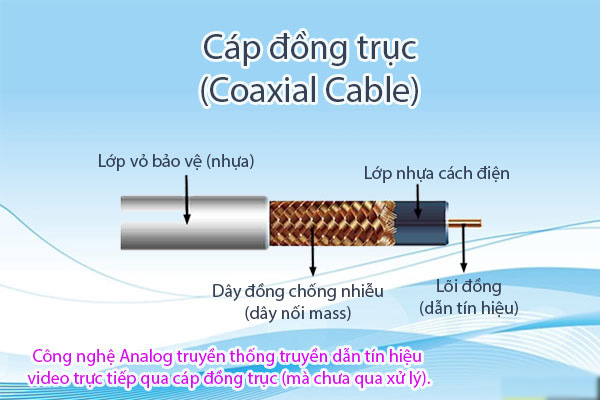
How different is traditional analog technology?
Analog technology uses coaxial cable for signal transmission.
In traditional analog technology (old technology), video signals are transmitted directly on coaxial cables without processing. So the signal is quickly weakened on the transmission line, cannot transmit far.
(2) Disadvantages of Digital technology (IPC technology for IP Camera)
At that time, IP Camera technology – signal transmitted over internet cable (IPC technology for short) – solved the problem of high quality video signal transmission.
However, IPC technology still has some disadvantages as follows:
- Prices of ip cameras are too high compared to analog cameras.
- The cost of a network cable is almost twice as expensive as a coaxial cable. This makes the price of large projects (when the cost is not focused on the camera, but too much on the cable makes an unreasonable).
- With old coaxial cable infrastructure works, it is very difficult to upgrade to network cables (going wall, ceiling, underground …)
- And IP camera technology always suffers from an irreparable signal delay. Due to the full dependence on internet technology and some problems such as routing technology, switching, LAN, internet interference leads to video lag when observing in real time.
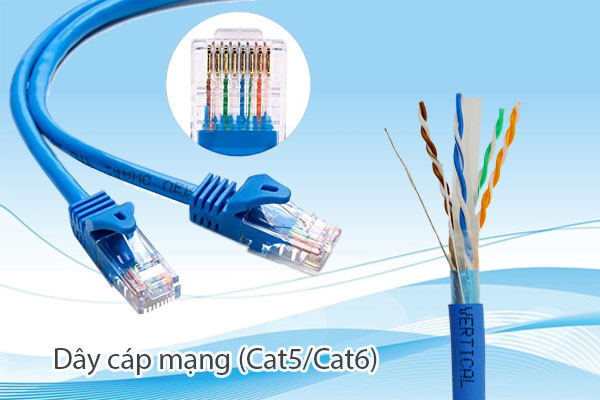
2. The birth of technology AHD, HD-TVI and HD-CVI
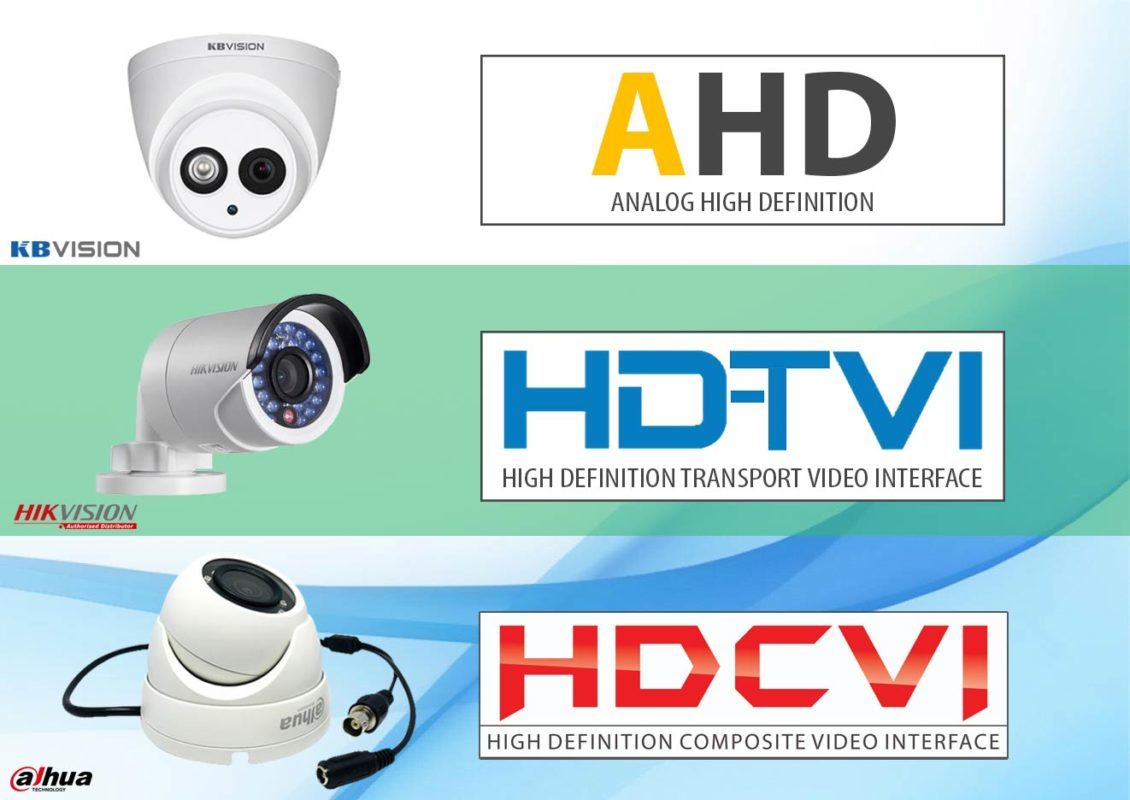
In the last years of the first decade of the 21st century (around 2007-2010), the question is how to solve that problem? Specifically, 01 new analog technology is needed but it must solve the following key issues:
- Help transmit analog images “further” (beyond the 100m mark) while ensuring signal quality at a distance.
- Can transmit Full HD 2K or higher images while still ensuring Full HD or higher image quality.
And the results of these “technology race” are breakthroughs. That is 03 famous technologies today.
03 High quality Analog technologies:
- AHD Technology: Analog High Definition is released by Nextchip.
- HD-TVI Technology: High Definition Transport Video Interface released by Techpoint.
- HD-CVI technology: High Definition Composite Video Interface (proprietary) video protocol of Dahua.
NOTE :
More amazingly, one has invented PoE technology to transmit signals – including video signals and camera sources – on a single coaxial cable.
PoE (Power on cable). Is the technology launched to help optimize the cost of power cord for the camera. The term Power on cable means that the “source” signal will go with “signal cable”. Therefore, the installation of the camera will not require additional wires, reducing the cost of materials and reducing the cost & time of system construction.
What is AHD technology?
1. What is AHD?
AHD (Analog High Definition) is a technology that delivers high quality images on coaxial cables officially released by South Korea’s Nextchip in 2014.

AHD technology helps to transfer high resolution Full HD (or higher) video signals through traditional coaxial cable up to 500m without reducing the quality of images, video and audio signals.
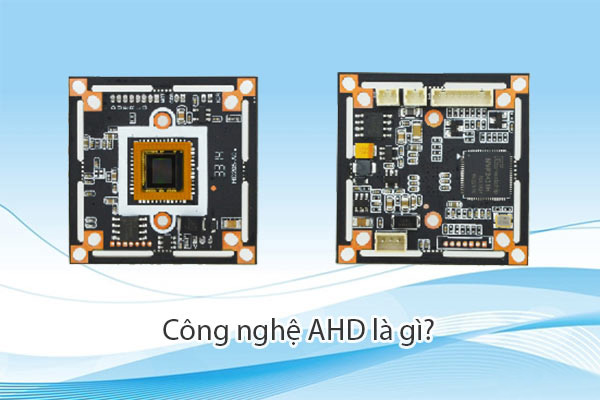
Technically, AHD technology applies the new generation Y / C separation technique. Y / C seperator helps separate signals to overcome signal interference on the line, which can help reduce color noise effectively and support better image reproduction.
2. Common AHD standards
There are three popular AHD standards in the market as follows:
- AHD-L (Low): AHD standard with low resolution. Camera AHD-L gives lower resolution than standard HD and is cheap.
- AHD-M (Medium): AHD standard for maximum 720p resolution (HD equivalent).
- AHD-H (High): AHD standard for 1080p resolution or higher (from Full HD or higher).
3. Advantages of AHD technology
AHD technology has broken the traditional distance limit from 100m to 500m. In addition, AHD technology for the ability to transmit high-resolution analog-based video via coaxial cable system while ensuring sharp video quality.
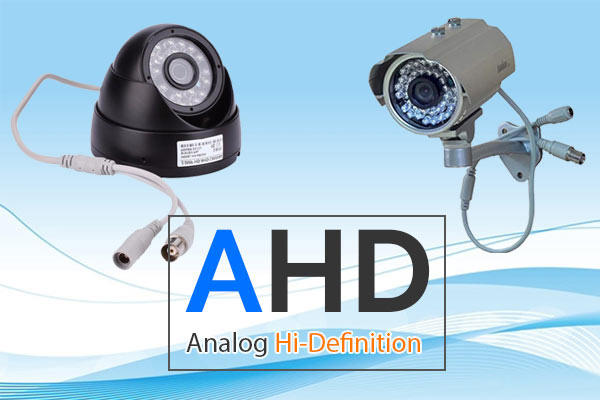
Features of AHD camera:
According to what Nextchip announced, unlike HD-TVI and HD-CVI, AHD technology does not focus on image compression. This has helped AHD camera technology bring outstanding advantages as follows:
- Advanced distance transmission (up to 500 meters on traditional 75-3 coaxial cable).
- There is no video delay because there is no need to compress and decompress. Enhance compatibility with other recorder & camera standards.
- Improve processing speed of graphics chip on camera and recorder because of not concentrating resources for compression and decompression.
- Provides more flexible camera control, combined with advanced warning features. Easy to install.
- High resolution: Advanced signal filtering, 3D noise reduction, higher image resolution, better image reproduction.
- And especially reduce the price because there is no need to focus on powerful processors for cameras.
NOTE:
In addition, AHD is a third-party open standard (Nextchip) so it has many advantages. The application of camera production will be more widespread, cost is sometimes better than other proprietary standards.
4. The famous chipset lines apply AHD technology
AHD technology is introduced by many camera chipset manufacturers into its chipset manufacturing technology. Sony is one of the most powerful application camera studios. These include some famous chipsets such as Sony Aptina, Omni Vision …
| Format | Chipset (NextChip) | Image Sensor | Effective Pixels |
| AHD 720P/960H | NVP2431H | Sony IMX225 | 1280×720 |
| AHD 720p/960H | NVP2431H | Sony IMX238 | 1280×720 |
| AHD 1080P | NVP2441H | OmniVision OV2710 | 1920×1080 |
| AHD 1080P+960H | NVP2441H | Aptina AR0230 | 1920×1080 |
| AHD 1080P | NVP2441H | Sony IMX222 | 1920×1080 |
| AHD 960P | NVP2431H | PixArt 5130 | 1280×960 |
| AHD 960P | NVP2431H | Aptina AR0130 | 1280×960 |
| AHD 720P | NVP2431H | Aptina AR0141 | 1280×800 |
| AHD 960P | NVP2430H | Sony IMX238 | 1305×1049 |
| AHD 720P | NVP2431H | OmniVision OV9712 | 1280×720 |
AHD Cameras Chipset + Image Sensor
Some other AHD standards:
- AHD-L – 960 x 576 px
- AHD-M – 1280 x 720 px
- AHD-H – 1920 x 1080 px
- 3 Mpx – 2048 x 1536 px
- 4 Mpx – 2560 x 1440 px
- 5 Mpx – 2592 x 1944 px
What is HD-TVI technology?
1. What is HD-TVI?
HD-TVI stands for High Definition Transport Video Interface, which means “Interface for high-definition video transmission”.
HD-TVI technology was developed by Techpoint (*) in 2014. Today HD-TVi technology is used by many camera manufacturers and recorders for its security products.
(*) Techpoint is a well-known US technology company based in San Jose, California, USA.
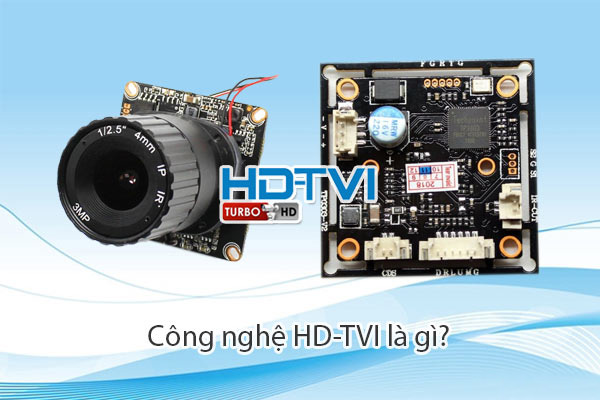
2. Advantages of HD-TVI technology
Similar to AHD, HD-TVi technology has solved many problems of high-definition signal transmission, improving the transmission distance up to 300m-500m while ensuring stable signal quality. keep the resolution intact.
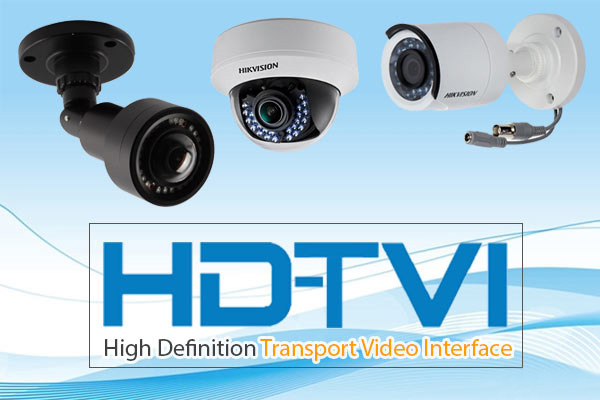
Advantages of HD-TVI technology:
- Transmission distance on coaxial cable reaches from: 300m-500m.
- Allow transmission on network cable (twisted cable) CAT5 / CAT5: 200m.
- The resolution can reach: 720p, 1080p (2Mp), 3Mp, 4Mp, 8Mp and can be higher.
- Traditional RG59 coaxial transmission technology (the most popular cable), enabling older analog camera systems to upgrade to HD, Full HD without replacing cable infrastructure, at no extra cost.
- Good transmission of video, audio & data signals without interference, no signal degradation.
- Allow to upgrade old camera system to HD-TVI technology camera while maintaining the entire old coaxial infrastructure, without additional infrastructure costs.
Disadvantages of HD-TVI:
Because HD-TVI is the standard that uses signal compression technology, which transmits on cable and then decompresses at the receiving device, there are some minor disadvantages as follows:
- It takes time to compress and decompress, which partly causes signal delay.
- Increase the task to be handled for the camera chipset.
In fact, according to our assessment, this latency is almost invisible (very difficult to perceive). As for IP camera system (IPC technology), the latency is very clear and you can distinguish it right away.
3. Application of HD-TVI technology
HD-TVI technology chipset is mainly introduced by many major camera manufacturers in the world into its camera and recorder.
Some partner brands are applying Techpoint’s HD-TVI technology:
- Hikvision: Camera brand China currently holds the world No. 1 position for many years.
- JFTech: Chinese camera company, using Techpoint’s TP2823C chipset.
- Rayshap Technology: Chinese camera company, using HD-TVI 4.0 chipset series.
- IDIS Gobal: Camera global company, using HD-TVI technology with DirectCX G700.
- Shenzhen TVT Digital Technology: using Ultra HD TD-2700-K Series chipset supports up to 4K UHD resolution.
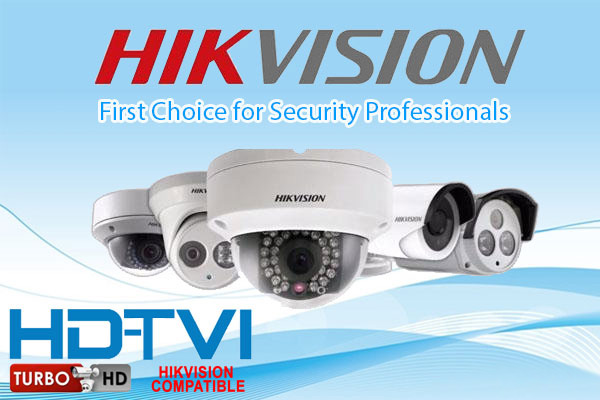
4. HD-TVI chipset series manufactured by Techpoint:
HD-TVI 4.0 Video Surveillance Receiver Chipsets
- TP2828: 4 Channel Multi Standard 3-8 Megapixel Receiver with 2 x BT.656 output support
- TP2829: 4 Channel Multi Standard 4 Megapixel Real Time Receiver with 4 x BT.656 output support
HD-TVI 4.0 Video Surveillance Transmitter Chipset
- TP2912: 1-8 Mega Pixel HD-TVI Transmitter
- TP3801: 720P Image Signal Processor with HD-TVI Transmitter
- TP3803: 3 Megapixel/1080P Image Signal Processor with HD-TVI Transmitter
- TP3805: 5 Megapixel Image Signal Processor with HD-TVI Transmitter
- TP3808: 8 Megapixel Image Signal Processor with HD-TVI Transmitter
HD-TVI Automotive Receiver Chipsets
- TP2824: Automotive Grade 4 Channel 1080P/720P/D1 Receiver with 4 x BT.656 Output Support
- TP2825: Automotive Grade 1 Channel 1080P/720P/D1 Receiver with 1 x BT.656 Output Support
- TP2854: Automotive Grade 4 Channel 1080P/720P/D1 Receiver with MIPI CSI-2 Output Support
- TP2850: Automotive Grade 1 Channel 1080P/720P/D1 Receiver with MIPI CSI-2 Output Support
- TP6806: Automotive Grade 1080P LCD display Processor with integrated HD-TVI receiver
HD-TVI Automotive Transmitter Chipsets
- TP2912G: Automotive Grade 720P/1080P transmitter
- TP2801G: Automotive Grade 720P/1080P transmitter
- TP3802E: Automotive Grade 720P/1080P Image Signal Processor with HD-TVI transmitter
Source : Techpoint.
What is HD-CVI technology?
1. What is HD-CVI?
HD-CVI stands for High Definition Composite Video Interface, which means “High resolution video compression interface”. Thus, we can understand the nature of HD-CVI as a compression and transmission technology for compression through coaxial cable.
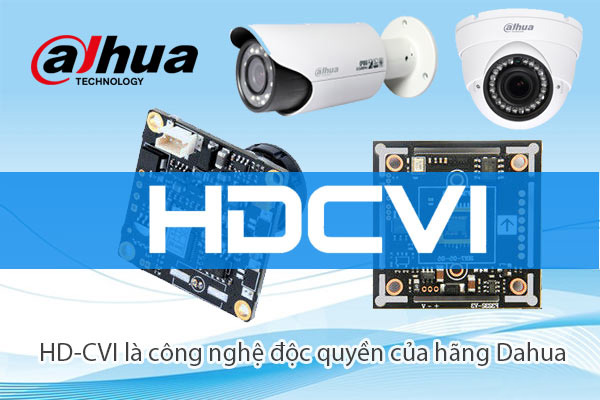
Different from 2 open technologies AHD & HD-TVI (provided by a third company – thirth party), HD-CVI is a technology researched, patented and exclusively by Dahua Group (*)
(*) Dahua is the second largest camera company in the world, voted by asmag.com (a prestigious leading technology magazine in the world).
2. Advantages of HD-CVI
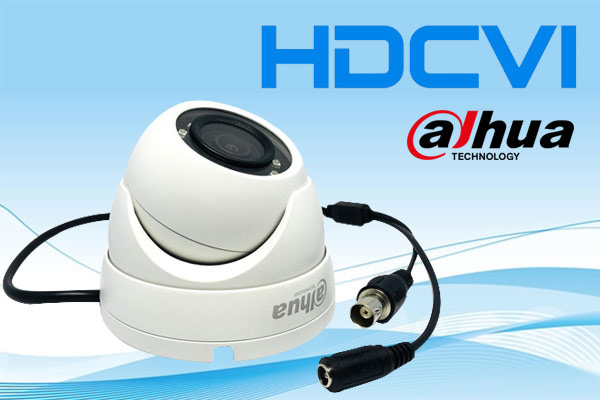
Advantages of HD-CVI:
- Ability to transmit Full HD signals 2.0Mp, 4Mp, 8Mp.
- Signal transmission distance reaches 300m-500m on traditional coaxial cable (similar to Tech-technology HD-TVI).
- Helping the old camera system to upgrade to HD-TVI camera technology without upgrading signal wiring infrastructure, coaxial cable and power cord, saving and optimizing system upgrade costs.
- Using image and sound compression technology reduces capacity and increases signal bandwidth on coaxial cable lines.
What is HD-SDI technology?
1. What is HD-SDI?
HD-SDI stands for High Definition Serial Digital Interface, which means “High-resolution serial digital communication standard”. HD-SDI was first standardized by the American Society of Film and Television Engineers (SMPTE) in 1989.
This is an old, outdated and outdated technology because of its limitations.
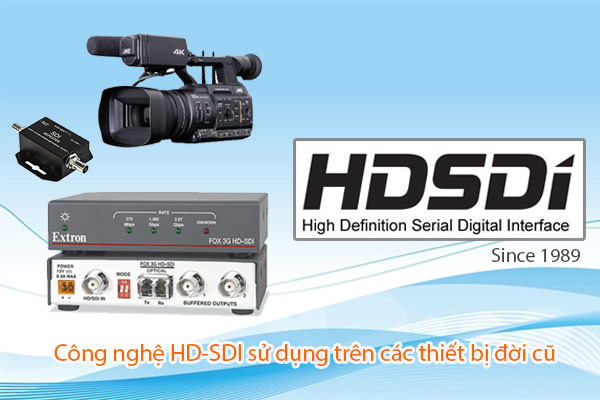
2. Disadvantages of HD-SDI
Initially, HD-SDI was the standard to help improve the quality of television and video images. Additional SDI standards have been introduced to support increased video resolution (HD, UHD and more), frame rate, stereoscopic video (3D) and color depth.
However, the biggest drawback of HD-SDI technology is that it cannot transmit far-away signals but keep the quality. In other words, HD-SDI technology when transmitting is a major disadvantage:
- No guaranteed stable signal when transmitting on coaxial cable. Frequent interference, images with grain or even loss of images when transmitted away.
- Can’t guarantee to keep the video definition when transmitting more than 100m distance with coaxial cable.
Comparison of standards AHD, HD-TVI, HD-CVI, HD-SDI
1. How different are AHD, HD-TVI, HD-CVI, HD-SDI and Analog?
In terms of technological nature, these five video transmission technologies have the following differences:
- AHD technology: splits data (Y / C splits) to be able to transmit further and without interference.
- HD-TVI and HD-CVI technology: data compression and packaging (size reduction & data protection) helps the data transfer farther, more compact and does not reduce image and audio signals when transmitted.
- HD-SDI technology: “standardize data” to ensure image quality without using any data separation or compression measures (so HD-SDI does not transmit far away).
- Traditional Analog technology: technology is outdated, not standardized and does not interfere with data. So there are many disadvantages such as reducing image quality, and not transmitting.
2. Comparison table between AHD, HD-TVI, HD-CVI, HD-SDI
| Technology | AHD | HD-TVI | HD-CVI | HD-SDI |
| Resolution of | 1920x1080p or higher | 1920x1080p or higher than | 1920x1080p or higher than | 1920x1080p or higher than |
| Output image quality | Daytime: Very good Nighttime: Good |
Daytime: Good Nighttime : Good |
Daytime: Good Nighttime: Good |
Daytime : Very good Nighttime : Very good |
| Maximum distance (Coaxial cable) | 500m | 500m | 500m | 150m |
| Maximum distance (network cable) | 100-200m | 200m | 100m | 100m |
| Technology | Signal Separation Technology (uncompressed) | Compression & decompression | Signal Compression & decompression | No compression, no decoding, no decoding of signals |
3. Image comparison between AHD, HD-TVI and HD-CVI
(1) Compare outdoor shots of AHD, HD-TVI and HD-CVI technologies
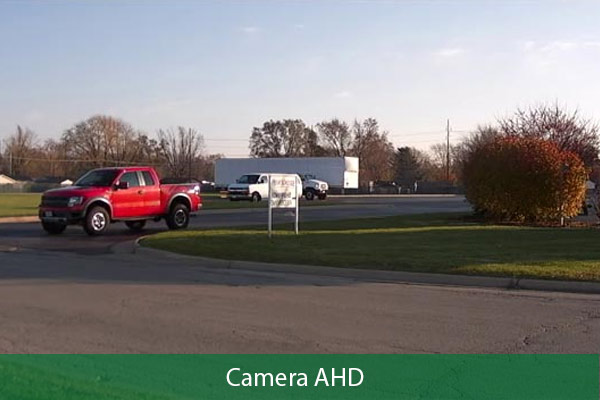
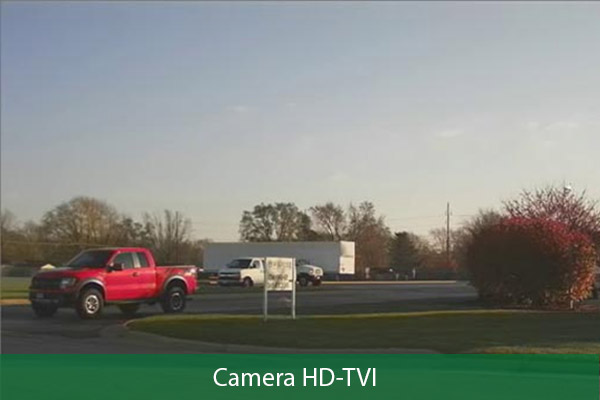
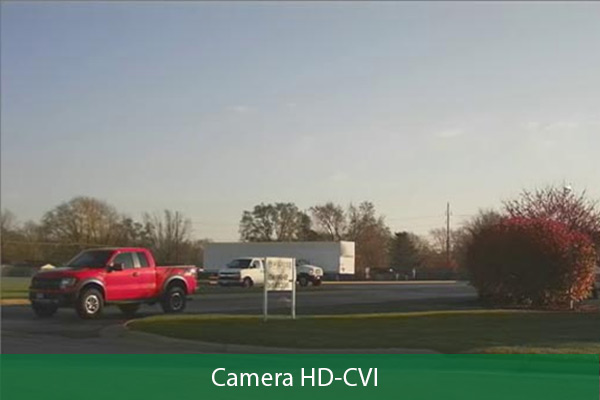
(2) Compare outdoor shots of cameras AHD, HD-TVI and HD-CVI
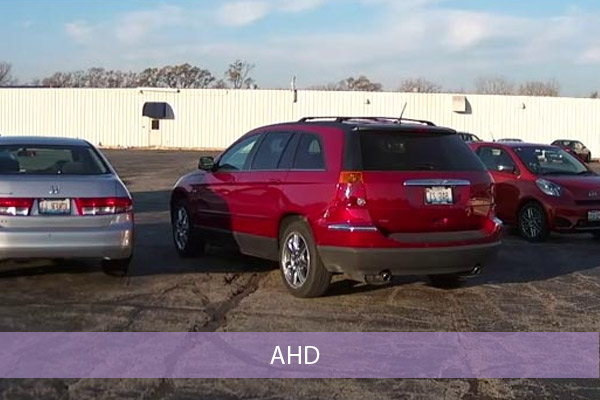
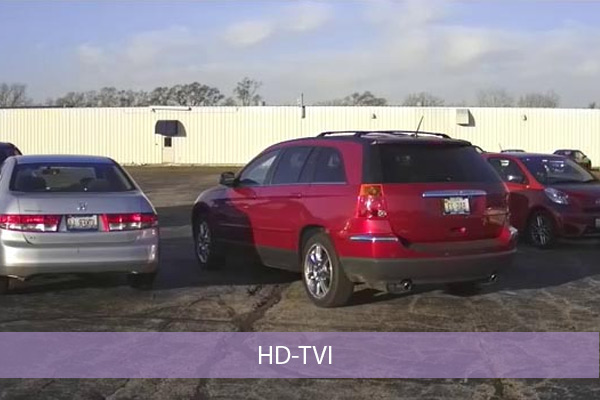
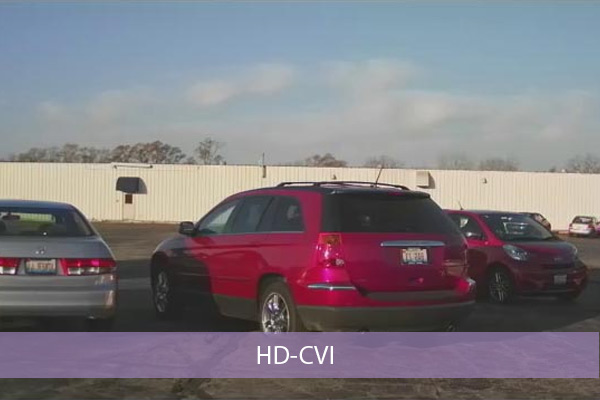
(3) Compare indoor shots of cameras AHD, HD-TVI and HD-CVI



Which one to choose AHD, HD-CVI or HD-TVI (considering the user’s interests)?
1. Which technology should you choose between AHD, HD-CVI or HD-TVI?
Is it too important to choose a technology between HD-CVI, HD-TVI or AHD? The answer is: don’t worry!
Overall, all three technologies are the most advanced technologies, the benefits are quite similar.
In addition, here are the features that you should be assured of:
Characteristics of AHD, HD-TVI and HD-CVI:
- New generation recorders now support both AHD, HD-CVI and HD-TVI standards, and even support older technology standards such as HD-SDI. (And also old analog standards).
- Even though HD-CVI & HD-TVI has latency (in terms of technical aspect), in fact, it is very difficult to realize this delay.
- In terms of price, cameras or recorders of these three technologies are equally priced and very competitive.
2. Which camera and recorder should I choose between AHD, HD-CVI or HD-TVI?
About MDVRs:
- You should choose the recorder that has all three technologies in place to ensure the ability to expand the system later.
- With some older generation recorders, you need to take note to choose the right camera and technology platform corresponding to the technology of the recorder. Or you can replace the recorder to “benefit” from improved technologies such as warning, alarm, 2-way audio support, P2P technology (remote camera viewing without network DNS domain name).
About camera:
- AHD technology camera should be selected: when the system is mounted on 30-40 cameras to avoid overloaded recorder (because AHD recorder does not need to decompress the signal), increase the processing speed of the large system. Note more to you that the AHD chipset is mostly produced by Sony, in the high segment, so the price will be higher.
- HD-TVI Technology Camera should be selected: when the system focuses on using Hikvision’s security cameras (Hikvision’s overall solution is very popular).
- HD-CVI Technology Camera should be chosen: when the centralized system uses Dahua’s security cameras (Dahua is also the world’s No. 2 camera brand).
Thus, whether AHD, HD-TVI or HD-CVI technology are all the most advanced camera chipset technologies today. All are capable of transmitting high resolution signals up to 300m-500m with images, extremely good sound. Moreover, the new generation recorders have also supported all three new technology standards, bringing a lot of utility for users.
Epilogue
Through the content of how to distinguish and compare the technology standards of AHD, HD-TVI and HD-CVI, Khoi Ngo we hope to help you understand and understand the similarities and differences of the AHD camera type, HD-TVI camera and HD-CVI camera, right?
I wish you a good day. Dear!
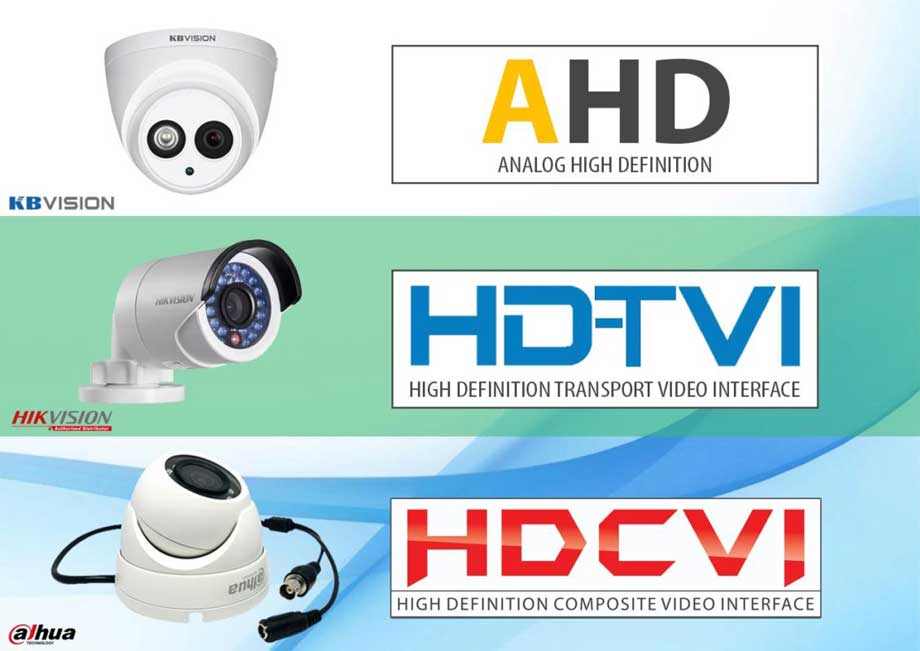
I did all but it does not
I wonder if I can give you my e-mail address.
great site man thank you
I wonder if I can give you my e-mail address.
very informative and revealing bravo!
please help me, my problem is not solved.
great site man thank you